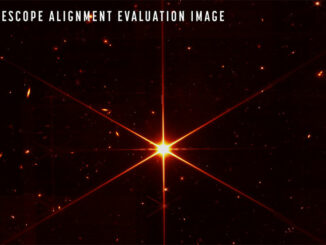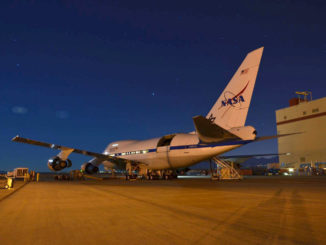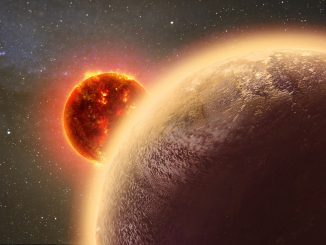
The Spitzer Space Telescope, one of NASA’s four “Great Observatories,” executed a final set of commands 30 January, putting itself to sleep after more than 16 years of trail-blazing infrared observations.
Flight controllers at NASA’s Jet Propulsion Laboratory in Pasadena, California, sent the commands at 2 p.m. local time. Given Spitzer’s distance from Earth, it took the signals about 15 minutes to reach the spacecraft. Fifteen minutes after that, radio transmissions from Spitzer vanished on control screens at JPL, and project manager Joseph Hunt declared the mission officially over.
“Spitzer has taught us about entirely new aspects of the cosmos and taken us many steps further in understanding how the universe works, addressing questions about our origins, and whether or not are we alone,” Thomas Zurbuchen, chief of NASA’s Science Mission Directorate said in a statement.
“This Great Observatory has also identified some important and new questions and tantalising objects for further study, mapping a path for future investigations to follow. Its immense impact on science certainly will last well beyond the end of its mission.”
Launched in 2003, Spitzer was equipped with a reservoir of liquid helium to chill the telescope’s 33.5-inch primary mirror to within about five degrees of absolute zero. At those temperatures, the telescope could pick up faint infrared emissions — heat — from deep space that that cannot be detected from the ground.
When the helium coolant ran out in 2009, two of its three instruments – an infrared spectrograph and multi-band imaging spectrometer – were no longer able to record the longest infrared wavelengths, bringing Spitzer’s “cold” phase of operations to a close.
But even without its cryogenic coolant, the observatory was still a frigid 28 degrees above absolute zero behind its protective solar panel. That was cold enough for the third instrument, the Infrared Array Camera, to keep “seeing” near- and mid-infrared light. And so, Spitzer’s mission continued.
Astronomers had hoped to keep the observatory operating until launch of the $9.7 billion James Webb Space Telescope, or JWST, an infrared successor to the Hubble Space Telescope with a segmented mirror 21 feet across. Spitzer’s mission was extended through 2018 and then through 2019.
But the JWST encountered technical issues, delaying its launch until 2021, and NASA management decided to pull the plug on Spitzer.
During the course of its career, Spitzer chalked up a steady stream of discoveries, averaging 7,000 hours of observations per year over more than 6,000 days in space. The result: More than 8,700 science papers to date and many more expected in the years to come as astronomers work through its vast data archive. Total cost of the mission: $1.36 billion.
“I think that Spitzer is an example of the very best that people can achieve,” Spitzer Project Scientist Michael Werner said in a NASA statement. “I feel very fortunate to have worked on this mission, and to have seen the ingenuity, doggedness and brilliance that people on the team showed. When you tap into those things and empower people to use them, then truly incredible things will happen.”



